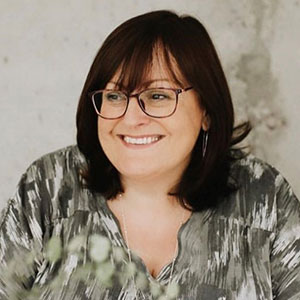#LetsChatDiabetes: Type 1 and Star Trek with Anne
 Anne Cooper, who describes herself as a “diabetes old hand”, was diagnosed with Type 1 diabetes in 1979 at the age of 16. The now 56 year old, has recently started using an NHS-funded Flash Glucose Monitor, or Flash for short – a small sensor that you wear on your skin that records your blood glucose (sugar) levels continuously throughout the day.
Anne Cooper, who describes herself as a “diabetes old hand”, was diagnosed with Type 1 diabetes in 1979 at the age of 16. The now 56 year old, has recently started using an NHS-funded Flash Glucose Monitor, or Flash for short – a small sensor that you wear on your skin that records your blood glucose (sugar) levels continuously throughout the day.
NHS England made a commitment in the NHS Long Term Plan to make these life-changing monitors available on the NHS for people with Type 1 diabetes that meet the criteria.
Anne tells us: “I had just started working in my first real job when, a few weeks in, I was admitted to hospital and told I had Type 1 diabetes, although we didn’t call it ‘Type 1’ back then. It’s hard for me to believe but I have lived with diabetes for 40 years, this year”.
Anne describes the changes to the treatment and care of Type 1 diabetes that she has seen during those 40 years; from testing urine in test tubes with fizzing tablets to Flash Glucose Monitors. In her own words: “It is quite extraordinary really – Flash has literally been life changing”.
“Back in 1979, Flash would have seemed like something off Star Trek. I was an avid viewer as a kid and watched in awe when Dr McCoy scanned his patients. And now, in 2019, I find myself living in Star Trek as I am scanning myself with my smart phone!”
Although Anne has achieved reasonable control of her condition for most of her life and has always tried to live well with Type 1 diabetes, she admits that it is an “intrusive condition” and “for a busy professional, not always convenient”.
“Despite testing often and adjusting, I never seemed to be able to get my levels down to where I wanted them to be. I have a busy life as a senior nurse and finding a balance between living a normal life and keeping my diabetes well managed is an inevitable tension.
“Flash has been life changing because it not only gives me data – a finger prick gives you a single data point – it turns it into information that I can make sense of and use to help me to manage better.”
For Anne, the ability to see the pattern of her blood glucose and whether she is managing to keep within her own target has been transformative: “I can even see what my predicted HbA1C is likely to be. It gives me patterns, so I know where to target my focus of self-care. I find the way the information is presented to be informative but also, and importantly, motivating.
“Being able to see how I am doing at night-time, just by flashing the monitor against my arm, is just such a wondrous thing. Flash helps me to understand what is happening, so if I am predicted to go low at bedtime, I can do something about it and anytime I wake, I scan. It is so reassuring.
“I have even started going to the gym again, confident that I can manage my levels without any disastrous crashes but also not having to run unnecessarily high.
“Turning data into information to help people with Type 1 diabetes selfcare has made all the difference in the world”.
